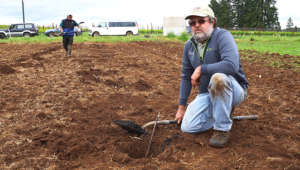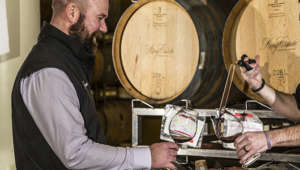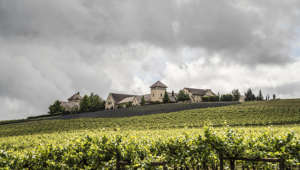Update: October, 13th 2022
A vineyard is like a theater, with soil as the stage, climate the lighting, and terrain the set. Think of grapes as the actors. Bringing it all together is the director, or the human factor. In winemaking that’s called tradition.
Harvest is a fitting time to delve into the fourth dimension of terroir – the local and cultural winemaking tradition that distinguishes New World from Old, California from Oregon, one winery from another. Every winemaker and every vintner, or grape grower, has his or her own style, informed by individual training, experience, location and preference.
What is Terroir?
While it seems obvious that people play a role in the making of good wine, there is disagreement over whether or not humans belong among the characteristics that define terroir. On this point, however, we side with scholars who place the role of humankind squarely in the mix. To quote Burgundian wine expert Jacky Rigaux, “There can be no great wine without the total commitment of the winegrower.”

Note the use of the term “winegrower.” According to a fascinating dissertation titled “Terroir – The Footprint of Great Wines” by South African Gerda Mouton, there is no word for “winemaker” in French (nor in Spanish, Italian or German). The word the French use is “vigneron,” meaning vine grower. Mouton says this illustrates the deeply ingrained European, or Old World, belief that wine is made by nature (that is, the natural factors of terroir), not by man or woman.
For every argument that terroir is fixed – something over which the winegrower has little influence – there is a counter-argument making the case for people. “Nature provides the raw material, but only people know how to turn it into something exceptional,” says Jacques Fanet in his book, “Great Wine Terroirs.” Kirk Wille wrote, “Great terroirs will always assert themselves, but it is the human factor that will change the manner of expression.” After all, it is a person who makes planting decisions, tends the vineyard and makes the wine, matching a vineyard’s special and unique terroir to the right grape to achieve the desired results.

Through the ages, people have determined what happens in the vineyard. Today’s viticultural practices play an even more predominant role – one of the key distinctions between New World and Old World winegrowing.
Again quoting Mouton: “Before a vineyard can even be planted it needs to be planned by the winegrower, and thus many decisions and actions are taken by the winegrower that have an influence on terroir, which subsequently reflects in the taste of the wine. The key method of expressing terroir is through the work done in the vineyards by the winegrower. It is the winegrower who understands the limitations and characteristics of his area/s; it is he who successfully marries his terroir with variety to achieve terroir diversity, which is so sought after in the New World. Thus the interpretation by the winegrower of his vineyard site is crucial and will influence the style of the wine.”
At King Estate, our 26-year tradition is influenced by factors including location, commitment to sustainability, individual choices and preferences, and even government regulations.
Location.
Oregon is a great place to showcase terroir, says Head Winemaker Brent Stone. Variation among sites is high, as reflected in vineyards that produce big rich Pinot Noirs and those like King Estate where our Pinot Noir is lighter and elegant in classic Burgundian style. Other regions have diverse climates, too, but the delicate and susceptible Pinot Noir grape shows the differences more than other grapes.

Sustainability.
King Estate’s organic certification traces back to 2002, and it became Biodynamic® in 2016. “Biodynamics is a big influence,” says Raymond Nuclo, Director of Viticulture and Winery Operations. “By limiting the need for inputs from off site, Biodynamics enhances the expression of place in a way that no other form of farming can.”
Biodynamic certification means the farm or vineyard is a wholly self-contained, sustainable ecosystem that exceeds organic standards. “It really frames what we do, and sets the standard for a ‘hands-off’ approach,” Brent adds. “The vineyard and vintage need to express itself. That’s a factor more than any technique.”
Oregon is a natural fit for adopting Biodynamic practices. The wine industry here is relatively young and came of age along with the environmental movement. “From the get-go the emphasis was on organic and sustainability,” Ray notes. According to the Oregon Wine Board, there are more certified Biodynamic vineyards in the Willamette Valley alone than in any wine-growing region in the country.
Preferences.
The matching of site to the wine grower’s vision is at the heart of tradition. “Our viticulture is planned for premium and ultra-premium wine,” Ray says, adding that most people growing premium grapes use similar practices. The more experience a grower has with a site the more precisely he or she can micro-manage it. As former Decanter Man of the Year Paul Draper said, “Terrior is discovered, developed and guided into wine by man.”
Regulations.
“France is bound by strict regulations on what they can plant where, as well as what type of viticultural practices that can be used,” Ray says. “We aren’t, which means there’s more innovation here.” With wide latitude to experiment, we can try different grapes at various locations in Oregon and even within our estate, sometimes with surprising results. After all, there was a time when people thought Oregon couldn’t grow good wine grapes! Our reputation for innovation was highlighted this year when King Estate Co-Founder and CEO Ed King was the only Oregon wine grower nominated for the Innovator of the Year award by Wine Enthusiast magazine.
